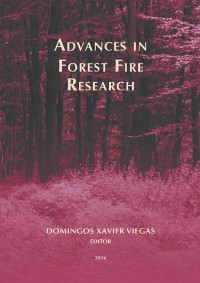Please use this identifier to cite or link to this item:
https://hdl.handle.net/10316.2/34160| Title: | Ash deposition during wildfire and its threat to water quality | Authors: | Santín, Cristina Doerr, Stefan H. Chafer, Chris J. |
Keywords: | Australia;Bushfire;Fire severity;Eucalypt forest;Drinking water;Pollutants | Issue Date: | 2014 | Publisher: | Imprensa da Universidade de Coimbra | Journal: | http://hdl.handle.net/10316.2/34013 | Abstract: | The highly erodible ash material that covers the ground after fire is increasingly gaining attention as a potential major contributor to water contamination in fire-affected landscapes. The recent and severe forest fires near Sydney (October 2013) provided an ideal opportunity to identity and quantify the potential main threats to water quality from pollutants present in the ash. These fires affected forests in the greater Sydney catchment, raising serious concerns about the risk of drinking water contamination from post-fire erosion. An extensive sampling campaign (sampling points = 120) was carried out in Jan. 2014 along a ridge with homogeneous vegetation and soils, but affected by a range of burn severities. Burn severity was classified based on the differenced Normalised Burn Ratio obtained from satellite imagery, validated by field observations and linked to estimates of fire intensity. Three burn severities were sampled: extreme (>70,000 kW m-1); moderate (7000-500 kW m 1); and low (<500 kW m-1). At each sampling point, the entire ash layer was collected from a square are of a specified size. The ash layer comprised the loose, charred and wettable material (<1 cm size) lying on top of uncharred water-repellent mineral soil. Total loads of ash increased substantially with burn severity with averages of 35 16 and 6 t/ha for extreme, moderate and low severity sites, respectively. Notable differences exist in ash composition between fire severities, from comprising mainly charcoal and fine charred particles (derived largely from combustion of litter and vegetation) at low severity sites to a more mineral enriched composition (with substantial contribution from charred mineral soil) at extreme severity sites. Results in bulk chemical composition of ash and main pollutants availability will be presented and discussed with special focus on potential implications for water quality impacts based on a series of post-fire rainfall and erosion scenarios. | URI: | https://hdl.handle.net/10316.2/34160 | ISBN: | 978-989-26-0884-6 (PDF) | DOI: | 10.14195/978-989-26-0884-6_182 | Rights: | open access |
| Appears in Collections: | Advances in forest fire research |
Files in This Item:
| File | Description | Size | Format | |
|---|---|---|---|---|
| 978-989-26-0884-6_182.pdf | 1.43 MB | Adobe PDF |  |
Items in DSpace are protected by copyright, with all rights reserved, unless otherwise indicated.
